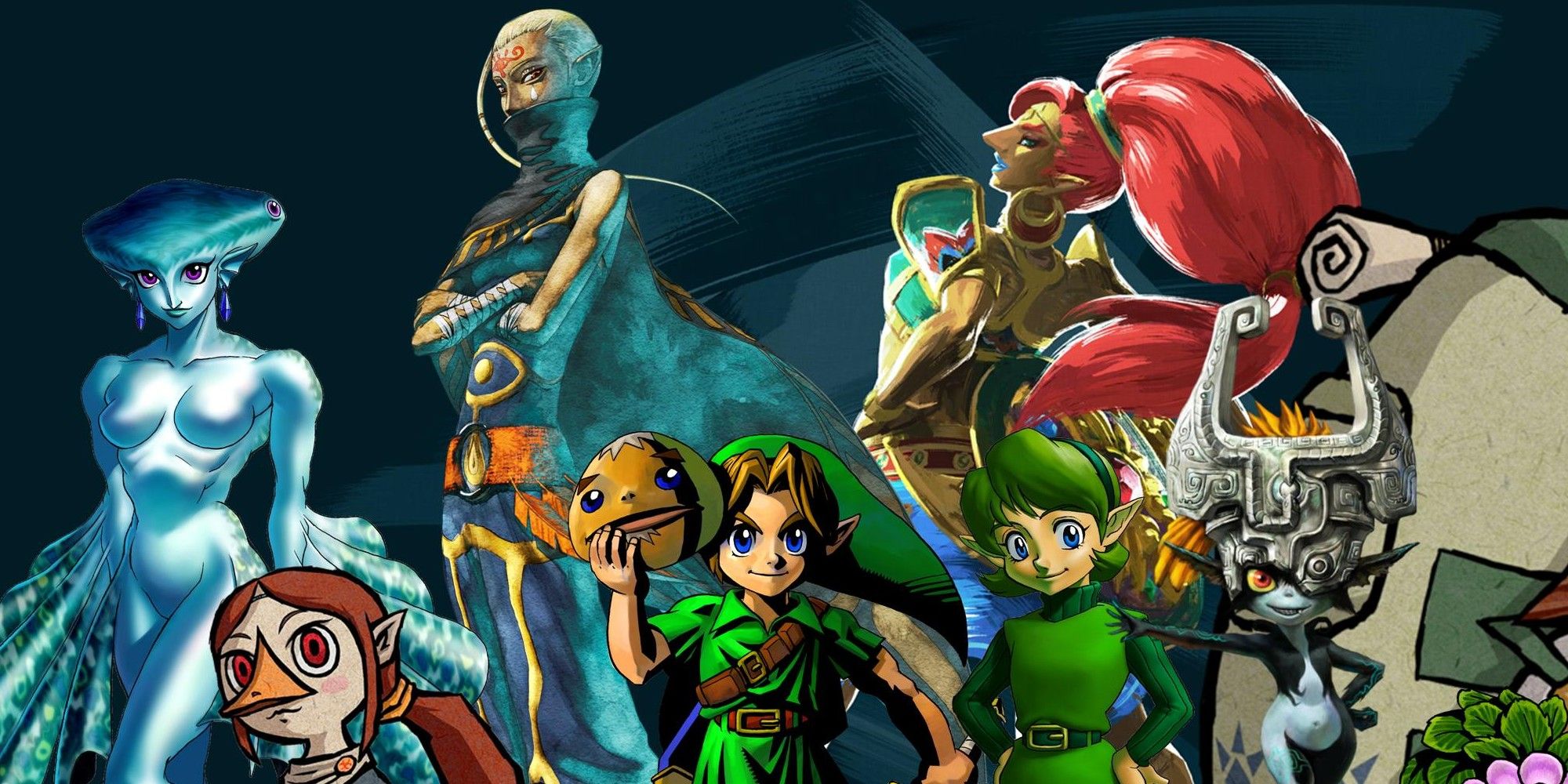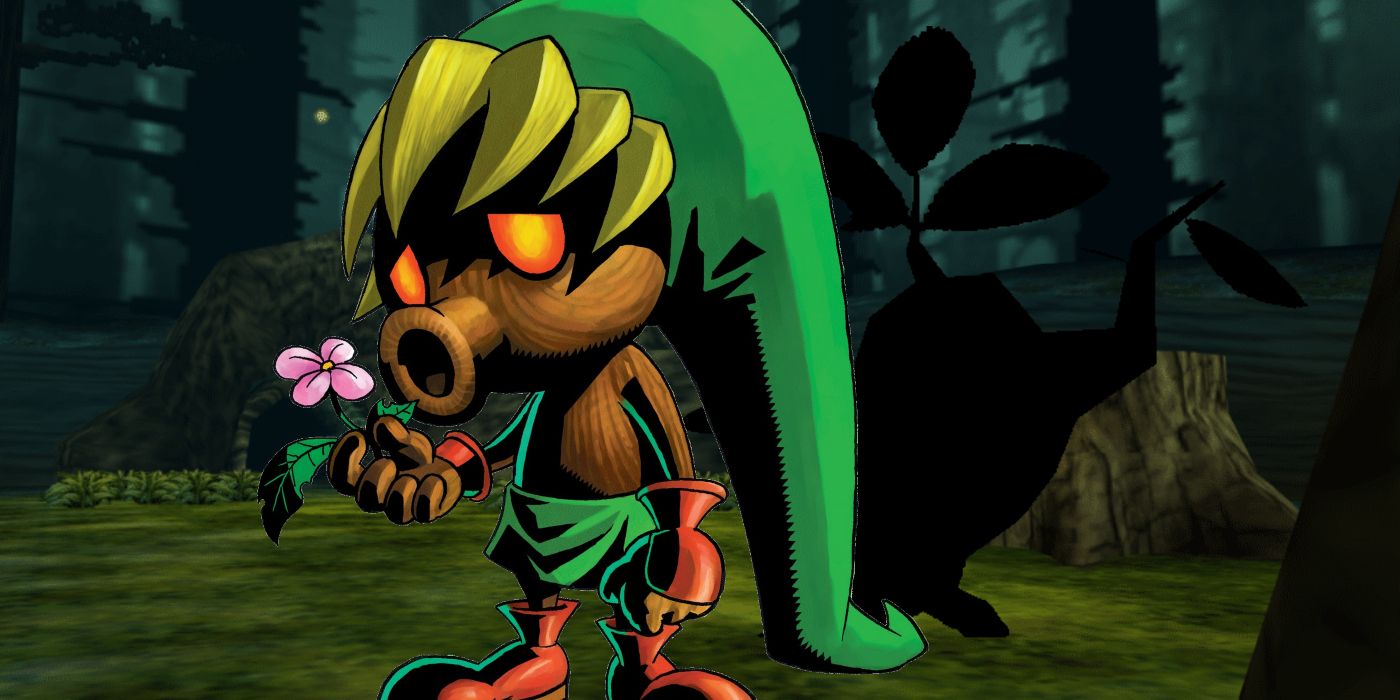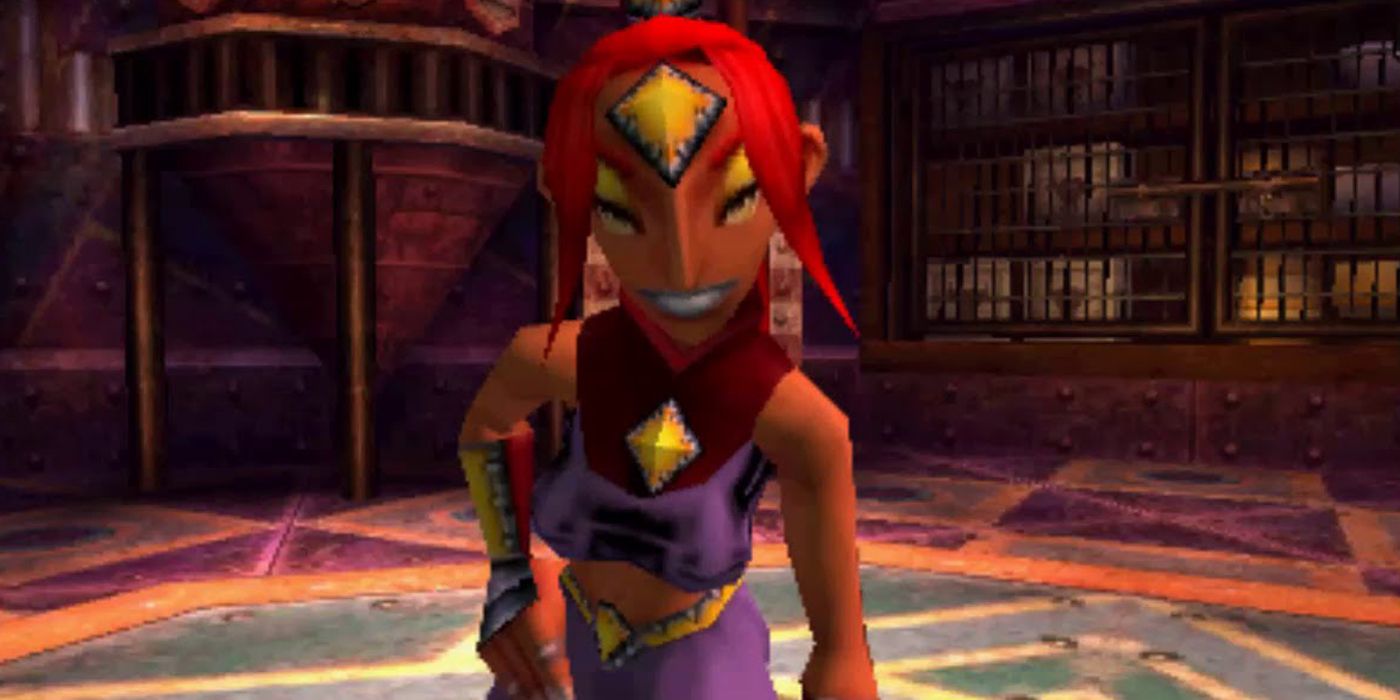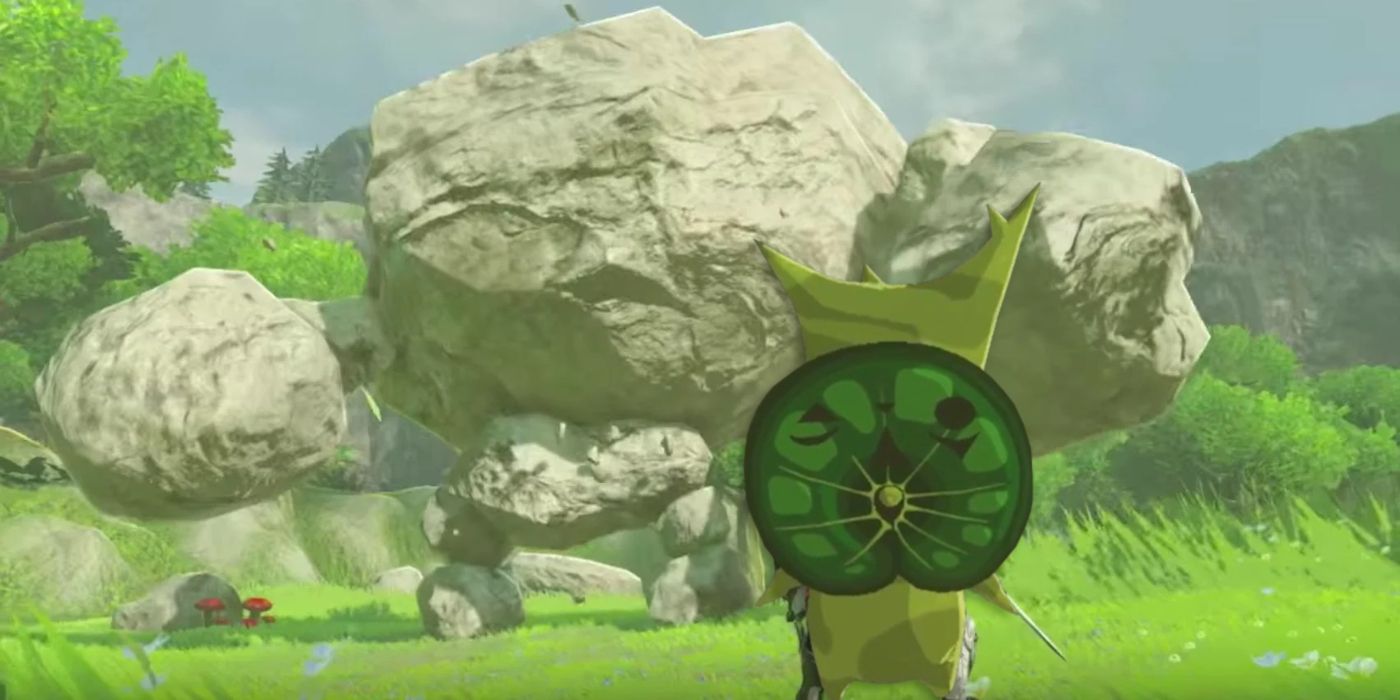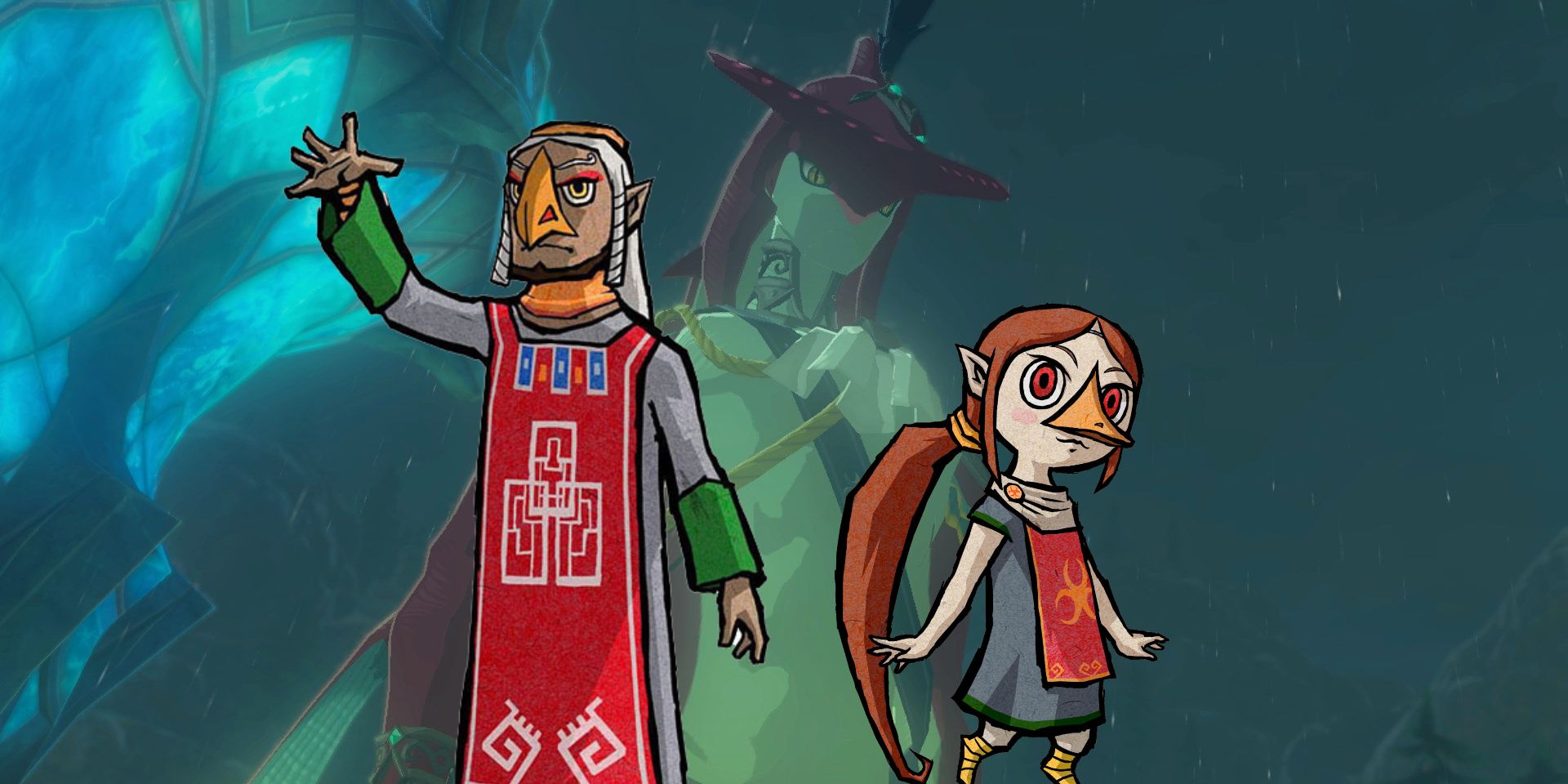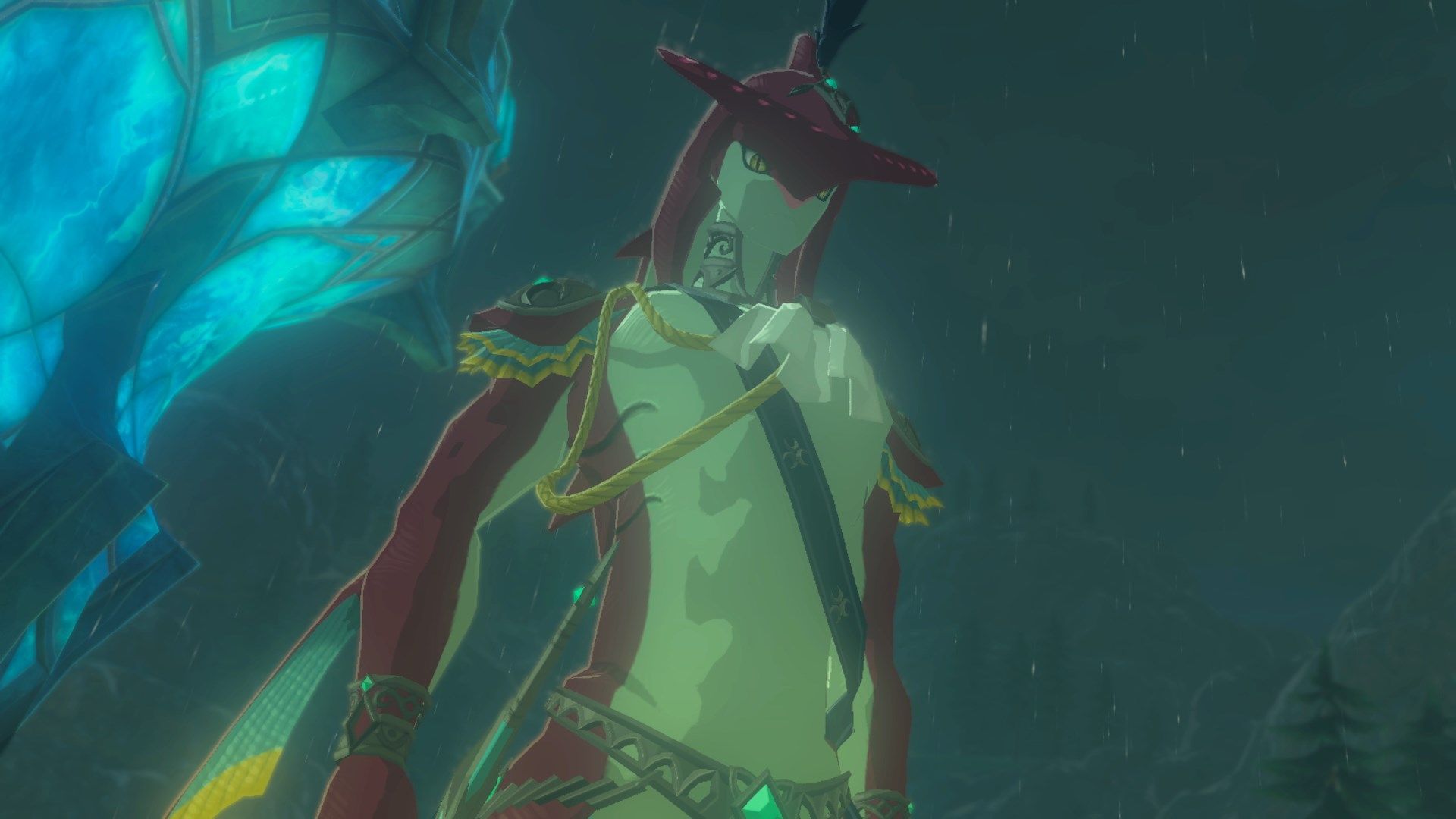Nintendo's The Legend of Zelda series is practically synonymous with video games. In 1987, when the first title launched on the Nintendo Entertainment System in the United States, an important piece of gaming history and entertainment culture was born. Most games, of course, center around the adventures of Link as he either saves or teams up with Princess Zelda.
However, as the Legend of Zelda games have progressed through the years, so has the lore of Hyrule. What began as a humble, overhead two-dimensional adventure game in the mid-1980s is now a fully-fledged universe, complete with its own races, societies, alternative timelines and fan theories galore.
As so often happens with long-running series, though, what's what can sometimes be a bit complex to sift through, especially when each game varies so differently from the last. To that end, here's an explanation of all fictional races from the Legend of Zelda series in alphabetical order, along with what game they appear in.
Legend of Zelda Fictional Races From A - Z
First up on the list are the Anouki, which appear in the Nintendo DS games Phantom Hourglass and Spirit Tracks. For the most part, Anouki look like short, round humans, other than the reindeer antlers sticking out of their heads. As would be expected, the Anouki prefer cold, snowy environments. While the Anouki dislike other tribes, like the Yook (which will be explained later in the article), they tend to stick to themselves in their peaceful villages instead of venturing out into the world. Some fans believe the word "Anouki" comes from the Inuit language of the Inuktitut in Canada, which makes a lot of sense.
The next race are the Cobble, which also first appear in Phantom Hourglass. The Cobble previously ruled over the aptly named Cobble Kingdom until, for no clear reason, the civilization collapsed. Their society focused heavily on architecture and mechanical innovation, which Link experiences when he explores the ruins toward the end of the game and has to fight one of their mechanical golems named Eox to complete the seventh dungeon.
Deku Scrubs are an iconic fictional race in the Zelda universe, and make an appearance in roughly six mainline games, although their first appearance was in Ocarina of Time. The Deku prefer to live in forests, often hiding away in bushes to pop out at players and shoot Deku Nuts at Link. In most games, Deku Scrubs are enemies, but Link has been able to team up with them a couple of times.
Fishmen are a race that are pretty self-explanatory. Seen only in Wind Waker, they jump out of the water and give Link advice on the world and help him fill in his sea chart. Other than that...well, they're basically just talking fish.
The Garo are a unique race found only in Majora's Mask, one of the darkest Zelda games to date. Visually, the Garo look like spooky humans in a cape, but there's much more to them than meets the eye. Each Garo is essentially a ghost, haunting the remnants of the Ikana Kingdom, which is where they lived while alive. Link can interact with these spectral warriors while wearing the Garo mask in The Legend of Zelda: Majora's Mask.
Up next are the Gerudo, which are found in four mainline Zelda games. The group lives in the Gerudo Desert, and are known for their thievery and strength. An interesting piece of Gerudo lore is that the race is made up of only females, except for every 100 years when a male Gerudo is born and destined to take over as king. So far, the only male Gerudo seen in the series is Ganondorf himself.
Gorons, sometimes known as the rock people, tend to stick to mountain ranges. The race is incredibly strong physically, and eats rocks mined from quarries. In the Legend of Zelda games, Gorons are usually pretty helpful, and team up with Link frequently. They can be seen in at least 12 different mainline games, including Ocarina of Time, Skyward Sword and Breath of the Wild.
Hylians are another iconic Legend of Zelda race, but there's not much to them other than they're basically humans with pointy ears. They established the land of Hyrule, and used to be able to wield powerful magic. The Kokiri Tribe are an off-branch of Hylians that live in the Kokiri Forest in Ocarina of Time, relying on farming and their relationship with the forest and Great Deku Tree for sustenance and wisdom. Another off-branch of Hylians and the Kokiri is the Wind Tribe from The Minish Cap.
Now come the races starting with "K:" Keaton, Kikwi and Koroks. Keaton are basically foxes with three tails, and there's not much else to say about that (although their mask is helpful to Link in Majora's Mask). The Kikwi are small, peaceful creatures that are part-plant, part-animal with a bushy tail and a plant sticking out of their head. Koroks are small, wooden creatures that wear masks resembling leaves. They're often portrayed as gifted musicians and artists, and help Link out on his journey in various games, including Wind Waker and Breath of the Wild.
The Lokomo (based on the word "locomotive") only appear in Spirit Tracks. According to the game, their solo purpose is to protect the tracks spread throughout Hyrule from the Demon King, which is why the Tower of Spirits and Spirit Tracks exist in the first place.
Maiamai likewise only appear in one game, A Link Between Worlds, and look like a mix between a snail and a squid, whereas the Minish (or Picori) are a race of tiny humanlike creatures found in the forest. Moblins are recurring enemies in almost every Zelda game, and have either piglike or goblinlike features (or both) depending on the specific portrayal. There's not much lore regarding their origin - they're mainly just foot soldiers for the bad guy. Meanwhile, the Mogma are from Skyward Sword, and are basically a mix between enormous moles and humans that live on Eldin Volcano. The group was one of the five races on the Surface who fought against Demise with the goddess Hylia.
Twilight Princess introduced the Oocca. They're considered an ancient race and have bird-like bodies with oblong, creepy human faces, residing primarily in the City in the Sky. According to Shad, a character in the game, the Oocca are more closely related to the gods than the Hylians, and the race has advanced technological and magical capabilities.
The Parella Tribe from Skyward Sword live in Lake Floria, kind of looks like a strange octopus mixed with a jellyfish, and were also one of the five races that fought Demise with Hylia. By the time Skyward Sword rolls around, they're serving the Water Dragon Faron.
Another famous race present in many mainline Legend of Zelda games are the Rito, which are essentially anthropomorphic birds. Depending on the game, they either lean more towards a human or more towards a bird, but the basic premise is the same - half-bird, half-person, and can utilize their wings as a mode of transportation. However, in each entry, the Rito have a fairly sophisticated society resembling that of the Hylians, with their own towns and political system.
Likewise, the Sheikah are similar to the Hylians (pointy ears, magical, etc.) but are much more secretive and also known as the Shadow Folk. They're considered guardians of the goddess, and since the Royal Family are considered her direct descendants, they are by default their guardians as well. They excel at almost everything, including combat, athletics and technological innovation. Skull Kids appear in Ocarina of Time, Majora's Mask and Twilight Princess, and Navi implies that they are children who got lost in the woods. They carry around flutes and usually attack Link with projectiles.
Twili, of course, show up in Twilight Princess. Originally a tribe of peaceful little creatures, King Zant turned them into Shadow Beasts as part of his nefarious schemes. However, the Twili are descendants of Hylian sorcerers called Interlopers who were condemned to the Twilight Realm because they tried to use the Triforce. Because of this, the Twili lived in isolation for hundreds of years until Zant and Link came along. Nonetheless, magic remained an important part of their culture, and positions of power were often decided based on magical capabilities. Midna is a key character regarding the Twili.
The Yook from Phantom Hourglass are the Anouki's rivals, as mentioned before. They're a hairy, humanoid species that live on the eastern side of the island, opposite the Anouki. Unlike the Anouki, the Yook are much more aggressive, and often attack Link.
Last, but not least, are the Zora, who feature an aquatic society throughout numerous Legend of Zelda games. Much like the Rito, the Zora resemble anthropomorphic fish, complete with fins and gills. Interestingly, before Ocarina of Time, the Zora were more reptilian and would attack Link. Now, however, the Zora appear as friends to Link, often assisting him on his journey whenever possible. The Zora have long lifespans that last centuries, if not millennia. They are incredibly protective of the water, and hesitate to stray far from their water-based societies. However, the Zora typically still have good relations with the Hylians and Gorons. They also tend to be rather spiritual, and reproduce by laying eggs that hatch a tadpole after roughly three days.
These are all the major fictional races in The Legend of Zelda series, for the most part. There were some omissions from less successful games, like Oracle of Seasons/Ages or Four Swords, but in terms of mainline success and 3D games, these are all the races players are most likely to come across.

